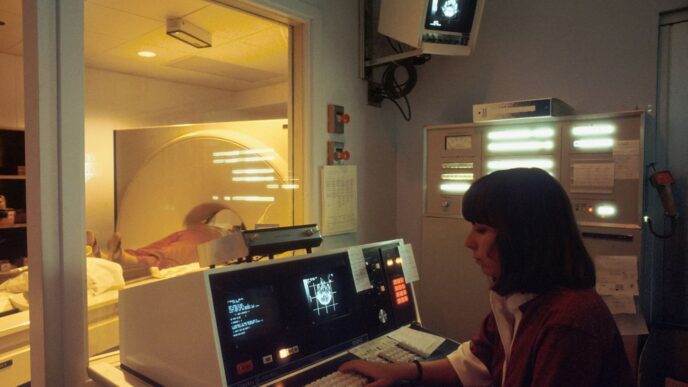Personalized nutrition is getting a major upgrade, and the Foodsmart program is leading the way. Instead of a one-size-fits-all approach, Foodsmart uses tech, data, and a big network of dietitians to help people eat better and feel healthier. Whether someone needs a meal plan that fits their health needs, help with grocery shopping, or support to manage a chronic condition, Foodsmart tries to make healthy eating more practical for everyone. They’re not just working with individuals—they’re teaming up with health plans, community groups, and even using AI to make nutrition guidance smarter and easier to access.
Key Takeaways
- Foodsmart program uses data and AI to give people meal plans and nutrition advice that fits their lives, not just general tips.
- The program works with Medicaid, Medicare, and community groups to reach people who might not have easy access to healthy food.
- Foodsmart is focusing on ‘food as medicine,’ helping manage and even prevent chronic diseases through better eating.
- The platform connects with healthcare systems, making it easier for doctors and dietitians to work together and track progress.
- Privacy and trust matter—a lot. Foodsmart puts effort into keeping user data safe and making sure people understand how the program helps them.
How the Foodsmart Program Personalizes Nutrition at Scale
Foodsmart isn’t just pushing diet advice into the void—it’s using real data and technology to make nutrition support feel like it was tailored just for you. Here’s what sets their approach apart:
Leveraging Advanced Data Analytics for Diet Plans
Foodsmart’s backbone is data. Tons of it. The program looks at everything from your health conditions to your dietary preferences and even your grocery habits. Then, it turns that messy pile into something useful: a diet plan that fits you.
How Foodsmart’s data-driven diet planning works:
- Collects personal and health data (age, goals, allergies, even neighborhood grocery options)
- Spots trends and gaps (like not getting enough fiber, or hitting too much sodium)
- Adjusts meal plans in real time when your needs or habits shift
This beats generic meal plans any day—no more cookie-cutter suggestions that ignore your real life.
AI-Driven Meal Recommendations with Human Dietitian Support
The AI makes smart meal suggestions, but a real registered dietitian checks in behind the scenes, too. It’s a balance between tech and a human touch. The machine helps you by picking out meals you’ll actually want to eat and that suit your health needs. But if something just isn’t working, or you have questions, a dietitian can step in and adjust things.
- AI analyzes your past meals, health data, and feedback
- Suggests new meals or tweaks based on what’s working or not
- Dietitians can make changes for complex cases or answer questions directly
Foodsmart has the largest standalone dietitian network in the US as of 2024.
Real-Time Tracking and Feedback for Sustainable Habits
If you’ve ever tried keeping up a food journal, you know it can be a hassle. Foodsmart makes tracking easier—and smarter. You log meals, and the platform gives feedback right away. Did that lunch push you over your sodium target? You’ll know immediately, not a week later.
| Feature | Benefit |
|---|---|
| Real-time nutrient tracking | Quick course-correction on food choices |
| Personalized reminders | Helps keep new eating habits on track |
| Progress charts | Regular motivation, visual feedback |
Immediate feedback and bite-size goals make sticking with healthy habits way more likely.
In short, Foodsmart manages to use tech to make things personal—not impersonal. Whether it’s through data, smart recommendations, or live coaching, the platform helps people actually make lasting changes in the way they eat.
The Role of the Foodsmart Program in Addressing Food Insecurity

Partnering with Medicaid, Medicare, and Community Organizations
Food insecurity isn’t just a buzzword; it affects millions of people every year in the US. Foodsmart is trying to do something about that by teaming up with major healthcare players and community groups to reach more people facing food insecurity. Here’s how they do it:
- They work directly with Medicaid and Medicare, which cover a lot of low-income families and individuals who might otherwise struggle to afford healthy food.
- Community partnerships increase their reach, making sure support lands in the neighborhoods that need it most.
- These collaborations open up nutrition help and resources that might have been out of reach before.
Integrating Foodscripts for At-Risk Populations
Foodscripts might sound technical, but it’s basically a way for doctors to "prescribe" healthy foods to patients, especially those who struggle to get what they need nutritionally. Here’s what this looks like in practice:
- Healthcare providers use Foodscripts to tailor food support to individual health needs (think diabetic-friendly groceries or heart-healthy options).
- The program matches these prescriptions with local delivery or pickup options, which saves time and effort for patients.
- Providers and payers get to track outcomes, making adjustments as necessary to keep things on track.
A simplified table shows just how many are being reached:
| Year | Foodsmart Participants (thousands) | Medicaid/Medicare Partnerships |
|---|---|---|
| 2023 | 820 | 19 |
| 2024 | 1,100 | 27 |
Improving Accessibility and Affordability for Underserved Groups
Accessibility and affordability are huge hurdles for people dealing with food insecurity. Foodsmart tackles this by lowering the typical barriers:
- The app suggests meals and groceries based on budget and location – no more endless searching for deals.
- Discounted options and healthy staples are featured right up front, making it easier for users to spot good choices on a tight budget.
- Some users get special discounts or subsidies through Foodsmart’s partnerships, making healthy eating genuinely more affordable.
All this adds up to a bigger impact, helping not only the people who use Foodsmart themselves, but also their families—because when healthy food is easier to get, it tends to show up on more dinner tables.
Expanding Food as Medicine with the Foodsmart Program
Enhancing Clinical Outcomes for Chronic Disease Management
Foodsmart wants to do more than just recommend healthy recipes—it’s really pushing into territory where food is seen as a fundamental part of treating disease. The program uses individual nutrition data and works closely with members living with conditions like diabetes, high blood pressure, and obesity. Their platform doesn’t just give you generic meal plans; it helps tailor food choices based on your health status, lab results, and even your grocery access. This approach can:
- Help lower risk factors such as high cholesterol and blood sugar
- Support healthier weights and better medication adherence
- Reduce costly hospitalizations by improving everyday habits
Here’s a basic look at the numbers Foodsmart targets with clinical outcomes:
| Chronic Condition | Key Metric Improved | Typical % Improved (as reported) |
|---|---|---|
| Type 2 Diabetes | A1C Level | up to 1.0 reduction |
| Hypertension | Systolic BP | 5-10 pts average drop |
| Obesity | Body Weight | 3-7% reduction |
(Not everyone hits these numbers, but even small changes matter for health systems.)
Collaboration with Healthcare Providers and Payers
The growth in the ‘food as medicine’ movement wouldn’t be possible without teamwork. Foodsmart teams up with hospitals, clinics, Medicaid and Medicare, and private insurers. Why? Because these groups want to reduce avoidable healthcare costs and improve patient engagement.
- They share EHR data to personalize nutrition support.
- Dietitians communicate with doctors and case managers.
- Partners get outcomes data to track impact (and adjust programs as needed).
These collaborations do more than add a badge to Foodsmart’s website; they help real people navigate the often confusing world of nutrition and health.
Supporting Preventive Care Through Personalized Nutrition
It’s not all about sick care. Foodsmart tries to move members toward better habits before problems get out of hand. The focus on preventive care means catching poor diet patterns early, educating users on food skills, and making healthy groceries more affordable and accessible. Real points here:
- Early nutrition intervention can stop the slide into chronic disease.
- Education helps people shop smarter, even on smaller budgets.
- Regular digital check-ins keep nutrition goals on the radar, not just at annual checkups.
Foodsmart is betting that food is treatment, but also food is prevention. And with the rising costs of health care, these bets matter more than ever.
Foodsmart Program’s Integration with Healthcare Systems
The Foodsmart Program doesn’t just talk about making nutrition part of healthcare—it actually does it. By working with electronic health record systems, doctors, and health plans, Foodsmart has made it smoother for medical teams to connect patients to real nutrition support. Making diet changes actually part of medical care is something doctors and patients both want, but tons of platforms say they do it—and few really make it happen. Here’s how Foodsmart stands out.
Seamless EHR Integration for Streamlined Referrals
Foodsmart has set up tech that actually plugs right into electronic health record (EHR) systems—the same ones doctors use every day. This means:
- Doctors can refer patients to Foodsmart’s programs in just a few clicks, right from the system they already use.
- Patient info gets shared safely and quickly, so there’s no need for double-entry or chasing paperwork.
- Both healthcare providers and dietitians see the same patient health data, so no one is out of the loop.
Here’s a quick view of the difference this makes:
| Process Before Foodsmart | With Foodsmart’s EHR Integration |
|---|---|
| Manual referral forms | 1-click digital referrals |
| Delayed nutrition visits | Patients contacted same week |
| Dietitians lack context | Dietitians see clinical notes on Day 1 |
Driving Coordination Between Dietitians and Physicians
Doctors might recommend nutrition help, but if there’s no follow-up, nothing happens. Foodsmart fixes this by:
- Allowing dietitians and doctors to message each other through a shared portal.
- Making test results and progress notes visible to both the doctor and the dietitian.
- Sending updates to the patient’s medical record so nothing gets missed at the next checkup.
Here’s what changes with this team-based approach:
- Doctors stay in the loop on meal plan progress.
- Dietitians can spot medication or health changes that might affect nutrition needs.
- Everything gets tracked, so outcomes are measurable.
Boosting Outcomes Through Digital Health Partnerships
Foodsmart doesn’t try to do everything alone. To reach more people—especially those covered by Medicaid, Medicare, or employer plans—it partners with health systems and insurers. This means:
- Nutrition care is covered as a real benefit for more people, not just an out-of-pocket extra.
- Health plans get reporting on diet and health changes, which helps with quality metrics and cost savings.
- Digital partnerships let Foodsmart scale up fast in new markets.
If you look at impact beyond just one doctor’s office, here’s what the numbers looked like after digital health integration in 2024:
| Area | Change Seen Post-Integration |
|---|---|
| Member retention rates | +30% |
| Chronic condition check-ins | +50% |
| Time from referral to visit | 5 days faster |
Bottom line: By making it easier for healthcare teams to send patients to nutrition programs—and making outcomes trackable—Foodsmart turns personalized diet into an actual part of medical care, not just an afterthought.
Harnessing Technology and AI for Smarter Nutrition
The Foodsmart program is changing how people think about food by using smart tech to make nutrition a lot more personal and practical. These tools don’t just help people track what they eat—they predict, suggest, and nudge in small but meaningful ways that add up over time.
Automated Food Tracking Using Image Recognition
Food logging used to be tedious. Now, with image recognition powered by AI, food tracking is as simple as snapping a photo. Instead of estimating portions or scrolling through endless food databases, users get real-time feedback just by using their phones.
Main features include:
- Automatic identification of meal items and portion sizes
- Calorie and nutrient estimations
- Saved meal histories for easy repeat meal logging
This isn’t perfect, but it’s fast and surprisingly accurate—usually within 10% of manual logging, making it much more appealing to stick with.
Utilizing Lab-Based and Wearable Data for Custom Guidance
Foodsmart boosts guidance by working with health data from lab tests and wearable devices. That means it’s not just about what you think you’re eating—it’s about what’s actually happening inside your body.
Here’s how Foodsmart brings this all together:
- Pulls in blood sugar, cholesterol, and other lab results to spot trends
- Integrates data from wearables like smartwatches or fitness trackers
- Adjusts meal recommendations based on ongoing tracking (e.g., sleep, steps, activity)
| Data Source | Example Metric | How It’s Used |
|---|---|---|
| Wearable (Fitbit, Apple Watch) | Activity levels | Adjusts meal suggestions to match daily burn |
| Lab test | Glucose, lipids | Targets recommendations for blood sugar or heart health |
| Food journaling | Nutrient intake | Spots gaps (like low iron) or excesses (like added sugar) |
AI-Powered Predictive Analytics for Health Outcomes
This is where things get really interesting. Foodsmart predicts how today’s choices might affect health tomorrow. These models look at tons of data—your habits, health stats, even genetics—and forecast risks or improvements.
The process includes:
- Monitoring ongoing nutrition and health trends per user
- Running custom models that identify patterns—like how sodium intake links to blood pressure spikes
- Suggesting small, specific tweaks that have the biggest impact on individual health goals
Basically, Foodsmart doesn’t just track and react; it tries to stay a step ahead, helping users outsmart their habits and get real outcomes instead of just data.
To sum up: Foodsmart’s tech puts regular people in control with tools that work in the background so users don’t have to be nutrition nerds to eat better.
Strengthening Consumer Trust and Engagement in the Foodsmart Program
The food and health tech world is crowded, and trust can be hard to earn—especially when sensitive health data is involved. Foodsmart recognizes that user trust and ongoing engagement are real make-or-break issues. The company works on these priorities, not just by tossing around fancy tech, but by focusing on real-world needs and concerns. Here’s how they’re keeping people on board and making the platform sticky.
Robust Data Privacy and Security Measures
When you sign up for Foodsmart, you enter a lot of your personal information—diet, health history, maybe even lab results. There’s always a risk in sharing this kind of stuff. That’s why Foodsmart prioritizes keeping data safe.
- Uses end-to-end encryption for all user data, following current security standards.
- Regular security audits and compliance checks to address new threats.
- Clear privacy policies; users see exactly what’s being shared and with whom.
- Fast response protocols for any potential breach; transparency is key if something goes wrong.
Quick Look: The Risks and Protections
| Concern | Industry Avg. Cost (2024) | Foodsmart Action |
|---|---|---|
| Data Breach | $4.45 million | Encryption, Rapid Alerts |
| Unauthorized Access | High Risk | Multi-factor Auth, Audits |
| Regulatory Penalty | Growing | Up-to-date Compliance |
Prioritizing Consumer Education on Platform Benefits
One big hurdle for many users is figuring out how to actually make use of all the platform features. Foodsmart spends time and energy helping folks understand what’s possible—and why personalized nutrition matters. Education is not some afterthought here.
- Tutorials and onboarding walk users through meal planning and grocery ordering.
- Live webinars and Q&A sessions let people ask their real questions, no matter how basic.
- Regular push notifications nudge users to explore new features—without being a pest.
- Resource libraries explain how food can impact chronic illness, so the science doesn’t feel overwhelming.
If people get what the program can do, they actually stick with it (and maybe even tell their friends).
Maintaining High Levels of Retention and Satisfaction
Getting users signed up is only half the battle. People dropping off after a month or two? That’s a waste. Foodsmart looks for ways to keep things interesting and helpful so you’ll stick around.
- Personalized dietitian support; you’re not alone in making food changes.
- Ongoing meal suggestions are refreshed based on your habits and preferences.
- Clear tracking of progress and health goals, so results are visible over time.
- Community features, like discussion boards or recipe swaps, foster a sense of belonging—because sometimes you need group support to stay motivated.
Here’s how Foodsmart reports are doing compared to other digital health platforms:
| Metric | Foodsmart (2024) | Industry Average |
|---|---|---|
| Retention Rate | 70% at 6 months | 60% at 6 months |
| Annual Churn | 20% | 20-30% |
To wrap it up: Foodsmart’s focus on transparency, education, privacy, and ongoing support builds more than a platform — it creates a relationship. And as anyone who’s ever tried to change their diet can tell you, having someone you trust in your corner makes all the difference.
Strategic Partnerships and Funding Accelerate Foodsmart Program Growth
Foodsmart is not just rolling out nutrition plans; it’s building a bigger network by teaming up with industry players and securing large investments. These moves are pushing the program into new markets and helping more people get access to personalized nutrition. Let’s break down how partnerships and funding are speeding up its growth.
Forging Alliances Across Wellness and Tech Sectors
There’s a push to make nutrition support more accessible and practical for regular people. Foodsmart is working with wellness platforms, food retailers, and major tech companies to reach broader groups. For instance:
- Linking up with wellness brands introduces Foodsmart to new audiences who already value health.
- Grocery store partnerships make it easier for members to buy foods that match their meal plans.
- Working with tech platforms means members get better user experiences and new digital features.
The potential for growth here is huge— the global wellness market is projected to hit $7 trillion by next year. Collaborations like these can mean a 15-20% jump in user acquisition, with lower marketing costs and quicker entry into new areas. An example of another industry growing via collaboration is interactive video tech adoption.
Leveraging Significant Investment for Innovation
Raising capital is key. In 2024, Foodsmart secured over $200 million in Series D funding. This kind of funding signals a lot of confidence from investors. With fresh funds, the company can:
- Expand technology, including better meal recommendation engines and food tracking tools.
- Build out its clinical team, especially dietitians that offer personal guidance.
- Reach markets that need nutrition help the most, such as communities dealing with food insecurity.
Here’s a quick look at the impact:
| Funding Round | Year | Amount Raised | Strategic Focus |
|---|---|---|---|
| Series D | 2024 | $200 million+ | Tech upgrades, scaling operations |
| Earlier Rounds | – | Cumulative $100M+ | Product development, partnerships |
Scaling Operations Through Acquisitions and Collaborations
Acquisitions can be just as important as partnerships for quick growth. By buying companies with complementary skills, Foodsmart can:
- Add new services or technology without starting from scratch.
- Bring in new customers right away.
- Shorten the time it takes to enter new markets by one to two years.
Strong partnerships and investments also let Foodsmart scale its operations. This means more people can access nutrition advice, and the program becomes more visible across healthcare and wellness industries.
In short, Foodsmart’s growth is all about making smart partnerships and backing them up with solid investments. These strategies not only get the platform in front of more users, but they also drive continuous innovation and keep Foodsmart competitive in a pretty packed marketplace.
Facing Competition and Market Challenges in Digital Nutrition

It’s not easy out there for digital nutrition companies. The market is busy, and newcomers pop up all the time. Foodsmart, for example, has to deal with rivals, changing rules, and tight budgets—especially when money gets tight for families or businesses. Here’s a closer look at these real-life hurdles.
Navigating a Crowded Health Tech Landscape
The boom in digital health means stiff competition for Foodsmart. New and established nutrition apps keep entering the market, each promising smarter tech or cheaper prices. This makes it hard to keep users and stand out. On top of that, rising marketing costs and price pressure can shrink profits.
Quick facts about the digital nutrition market:
| Factor | Statistic |
|---|---|
| Churn rate | 20-30% leave within the first year |
| Market size (2023) | $175.6 billion (digital health market) |
| Retention boost | 30% higher for platforms with integrations |
Foodsmart has to:
- Set itself apart from platforms like Season Health and Nourish
- Regularly update tech and program features to stay interesting
- Balance marketing spend with actual user gains
Adapting to Regulatory Changes and Reimbursement Models
Laws and insurance policies don’t stay the same for long. Foodsmart relies a lot on partnerships with payers like Medicare and Medicaid—so when reimbursement rules change, it can quickly affect revenue and growth. For example, if Centers for Medicare & Medicaid Services (CMS) shifts its nutrition benefit coverage, Foodsmart could lose a chunk of its clients or have to renegotiate big contracts.
What this means in practice:
- Annual CMS changes create uncertainty around coverage for nutrition programs
- Any cuts or delays in reimbursement slow down Foodsmart’s growth
- New data privacy laws mean added costs to stay compliant
Here’s a look at some regulatory challenges:
| Challenge | Impact |
|---|---|
| CMS policy updates | May cause revenue swings |
| Privacy requirements | Extra compliance effort/cost |
| Employer benefit cuts | Shrinks subscription base |
Demonstrating Long-Term Value to Employers and Payers
Foodsmart’s programs don’t come cheap, so employers and insurance payers want proof they work. That means showing real, lasting health improvements and return on investment. This isn’t always easy, since health changes happen slowly. Employers especially want to see healthcare costs drop, not just people logging in.
What Foodsmart has to focus on to prove value:
- Collect and share evidence showing lower doctor visits and better health outcomes
- Run and publish long-term studies
- Maintain open communication about ROI with business clients and payers
If Foodsmart can’t show clear benefit, contracts might not get renewed. Plus, other apps will be eager to take their spot, promising better data or cheaper rates.
Competitive markets and changing policies aren’t going away. Foodsmart has to be quick on its feet, keep customers happy, and always prove it’s worth the investment—otherwise, the next big nutrition app might take its place.
Conclusion
So, looking at everything Foodsmart is doing, it’s clear they’re shaking things up in the world of nutrition. They’re not just another app with meal plans—they’re connecting real dietitians, grocery delivery, and even working with doctors and insurance. That’s a big deal, especially for folks dealing with chronic health issues or food insecurity. Sure, there are challenges, like keeping users interested and making sure people trust their data is safe. But with all the funding and partnerships they’ve got, plus a growing focus on "food as medicine," Foodsmart seems set to keep growing. If they can keep proving their approach works and reach more people who need help, they might just change how we all think about eating for better health.














